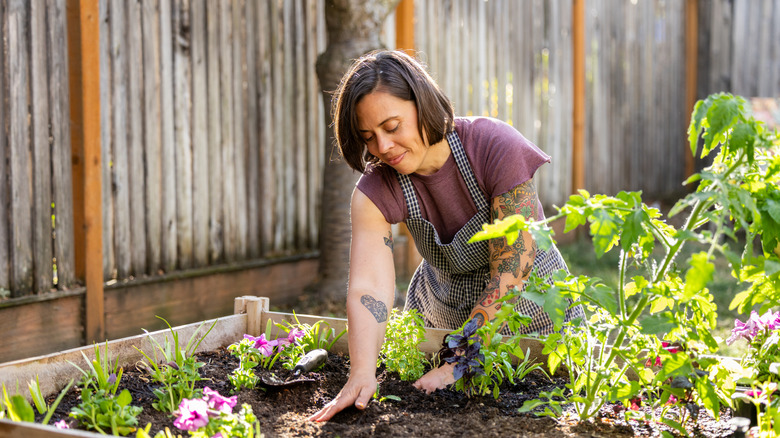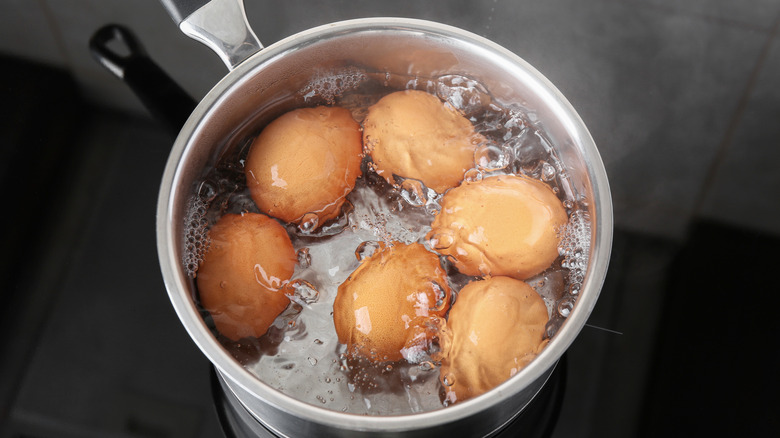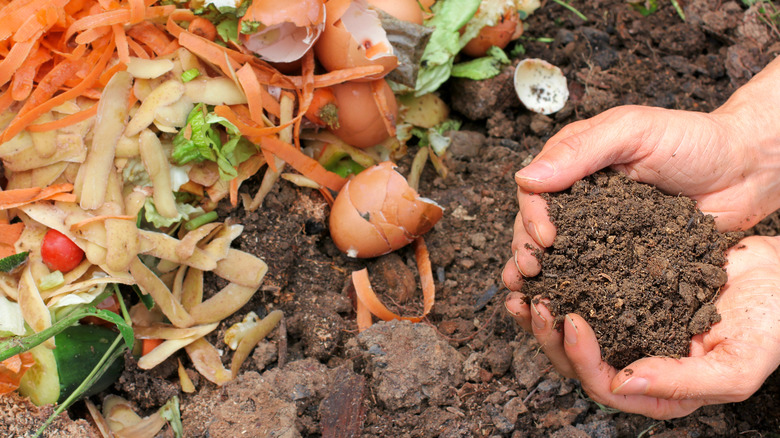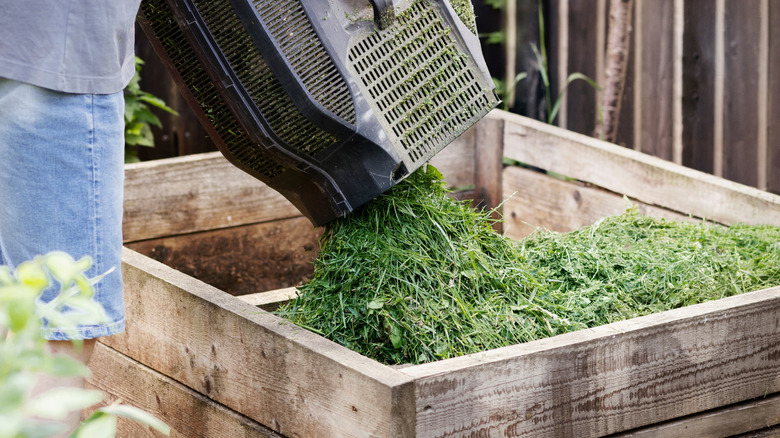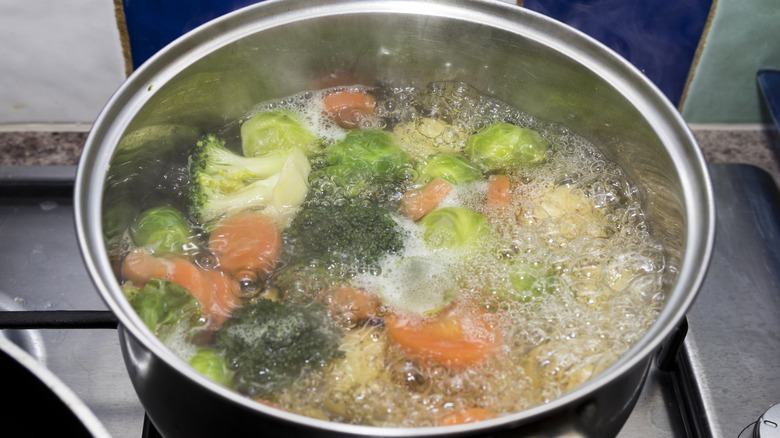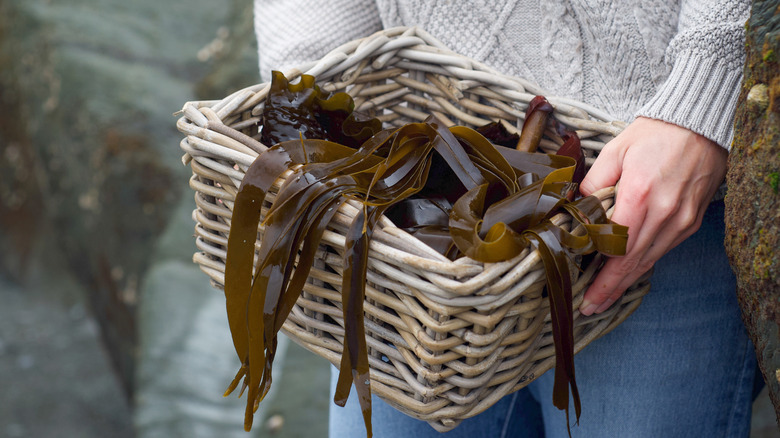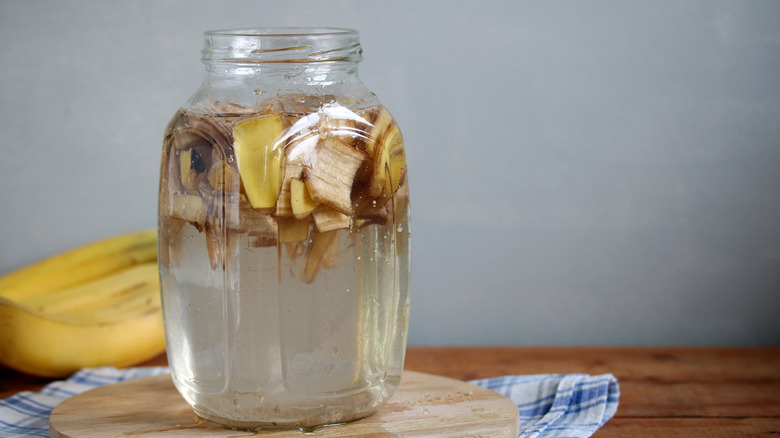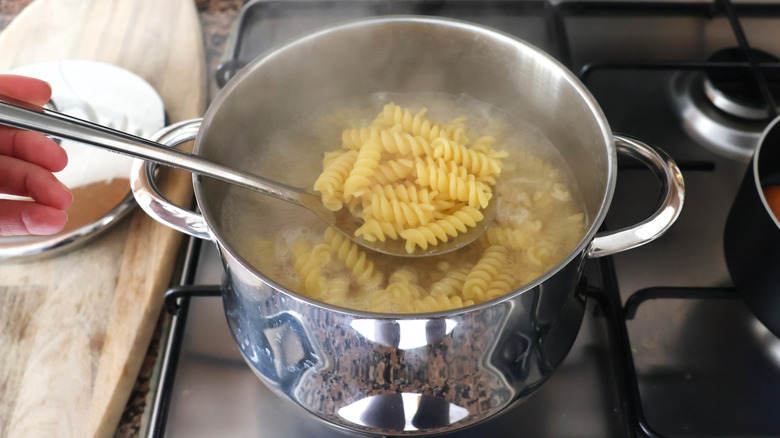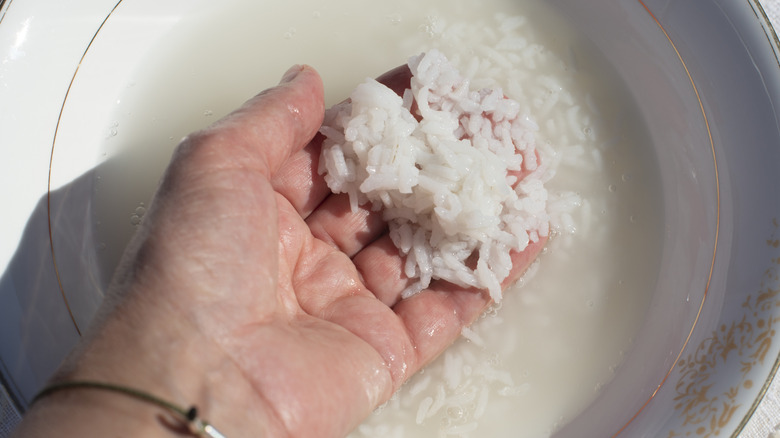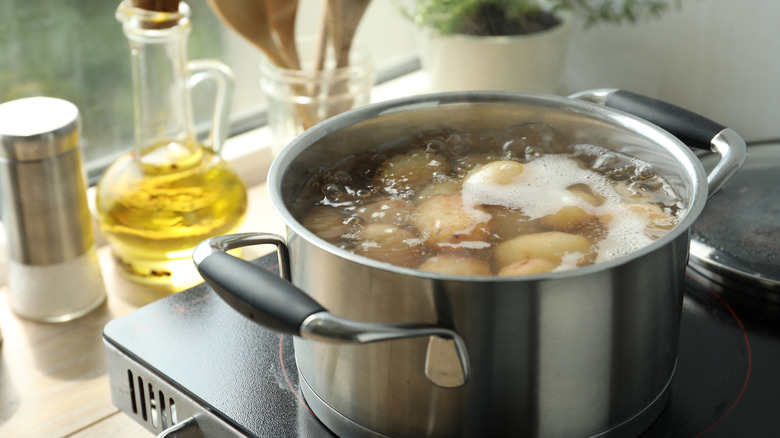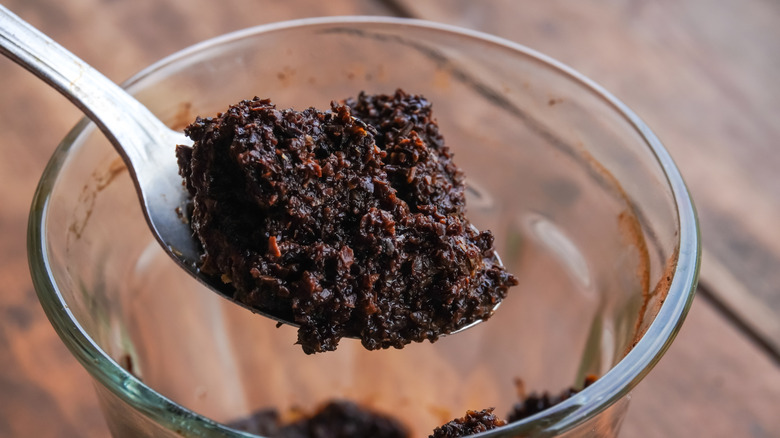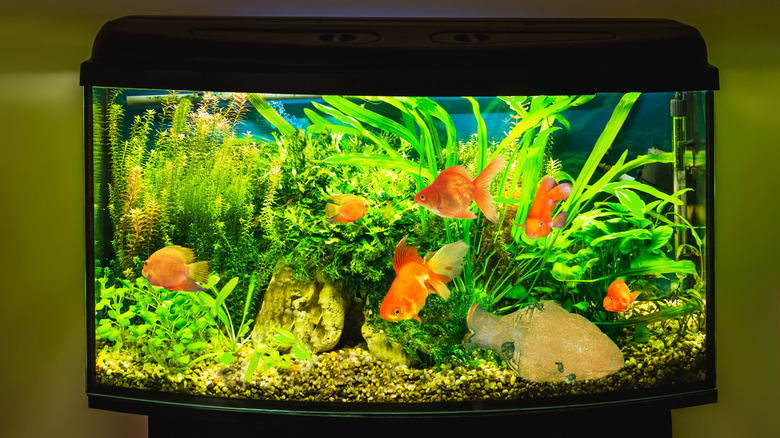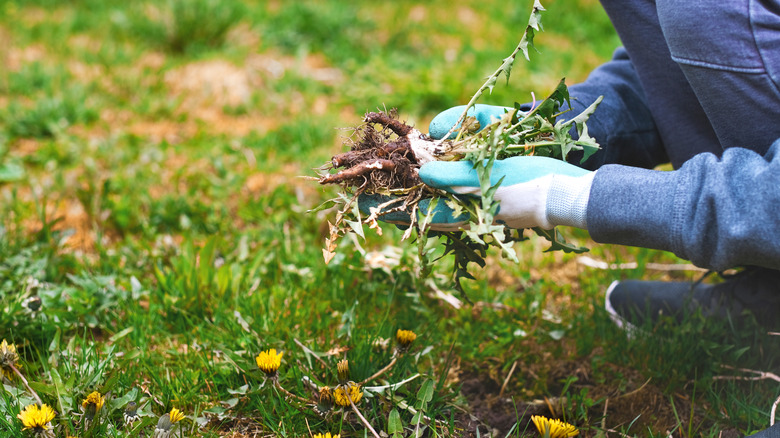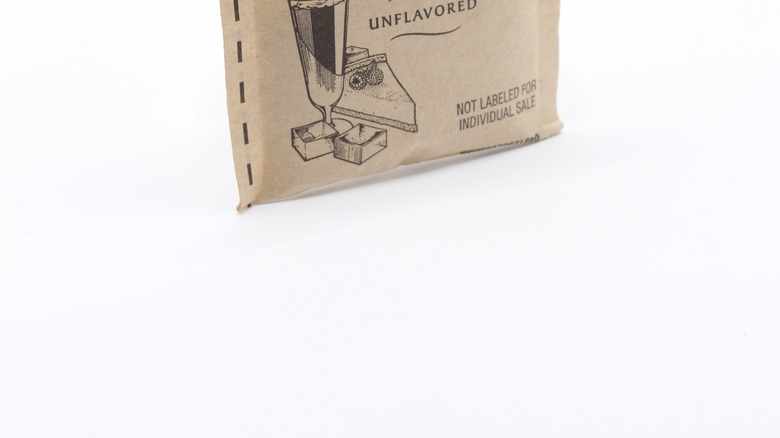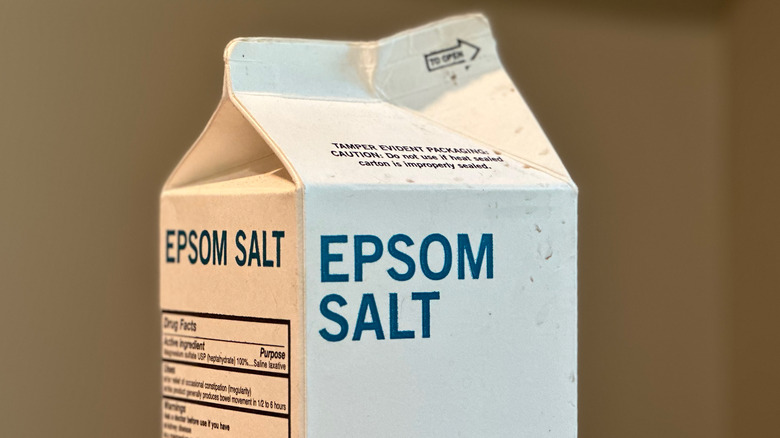14 Infused Water Fertilizers Proven To Naturally Improve Soil
Fortifying soil with fertilizer is an essential step to help your garden yield a bounty of flowers, fruits, and vegetables. Plants need nitrogen, phosphorus, and potassium in the highest amounts. They also need several micronutrients, such as zinc and copper, to carry out basic functions. While synthetic fertilizers deliver a quick dose of these nutrients, frequent use negatively impacts the soil and the surrounding ecosystem over time. Long-term use can kill the soil's natural microorganisms, and the rapid nutrient release can lead to algae blooms and water pollution. Additionally, constantly repurchasing these fertilizers can become expensive.
Many common household items can be used as natural fertilizers, such as banana peels, gelatin, and rice. Soaking or fermenting these ingredients in water creates powerful natural fertilizers that release nutrients slowly and steadily. Some, like eggshell water, are natural byproducts of cooking. These infused water fertilizers are economical, environmentally friendly, and packed with all the nutrients that plants need to thrive.
Eggshell water
Eggshell water is a fertilizer so simple that it might just be a byproduct of your breakfast. The water you use to boil eggs leaches calcium from their shells, giving plants a small nutritional boost. Calcium plays a vital role in helping plants develop new tissues, such as young leaves and shoots. You can also boil cracked eggshells to get the same nutrient-rich water. After boiling, add the shells to your compost pile or sprinkle them around your plants.
Compost tea
Compost tea provides the nutritional benefits of dry compost without adding extra soil, making it ideal for potted plants and small spaces. To make compost tea, simply soak compost in water for 2 to 24 hours. The longer it steeps, the more concentrated the solution will be. Tap water often contains chemicals, such as chlorine, that can kill micronutrients. For compost tea, it's best to let tap water sit for a day to allow the chlorine to evaporate or use rainwater. This tea gives your plants a drink of beneficial microorganisms and macronutrients.
Grass clippings
Don't let your grass clippings go to waste next time you mow your lawn. They're an excellent source of nitrogen, as well as potassium, phosphorus, chlorophyll, and amino acids. Gather your grass clippings in a mesh bag and soak them in 5 gallons of water for a few days. Then you can remove the grass clippings, water your plants with the solution, and watch them thrive.
Vegetable water
The water left behind after boiling or steaming vegetables is rich in macro and micronutrients, such as potassium, calcium, and phosphorus. You can also boil vegetable scraps such as carrot peels and broccoli stems to make a nutrient-rich fertilizer. Boiling vegetable matter for 30 to 45 minutes provides ample time and heat for mineral leeching. Certain vegetables, such as broccoli and cabbage, can leave a strong odor, so you may want to avoid using the water for indoor plants. Either way, the results are well worth it.
Liquid seaweed
Seaweed concentrate is a natural liquid fertilizer sold in stores, but did you know you can make it yourself? If you live near the ocean, you're in luck. Seaweed fertilizers are a rich source of micronutrients, especially zinc and manganese. These two are crucial to many plant functions, like hormone production, photosynthesis, and disease resistance. Seaweed also contains natural plant growth hormones that boost yield. Ferment your seaweed in water for at least a week to create a nutrient-rich concentrate. This substance can then be diluted with water and used in your garden.
Banana peel water
After you enjoy a potassium-rich snack, you can share the peels with your plants. All plants require potassium, but it's especially important for fruit and flower production. Save the peels and soak them in a jar of water for a few days, covered but not tightly sealed. Then, just strain out the peels and water your plants. If you used more than a couple of peels, you may want to dilute the solution before adding it to your garden to avoid over-fertilizing.
Pasta water
Starch provides plants with a long-term energy source and supports cell growth and structure, and the cloudy water left over after cooking pasta is rich in beneficial starches. This is especially helpful to plants during periods of low energy production, such as winter. Set aside the pasta water after cooking and dilute it with fresh water if it looks too cloudy. It's important to note that you should avoid using salted pasta water, as the added salt can harm plants.
Rice water
Just as pasta water is rich in starch, rice water is as well. Rice water can be made by rinsing, boiling, or fermenting. Each method increases starch concentration, while fermentation also introduces beneficial bacteria. Fermented rice water is made by leaving rice to soak in a dark place for one to two weeks. Because it's so concentrated, fermented rice water should be diluted in a 1:2 ratio before use.
Potato water
Potatoes are another excellent source of starch and a unique source of minerals. Both the peel and the inside of a potato contain magnesium, potassium, and phosphorus. Save the water after boiling potatoes, or soak the peels to capture their nutrients. Potato peels should be soaked in water for 10 to 15 days to allow the nutrients to absorb. During this time, the peels darken, and the water will turn brown.
Coffee ground water
Leftover coffee grounds have unexpected uses around your home, including in your garden. Your morning cup of coffee can give your garden a jolt, too. Coffee grounds provide nitrogen and potassium that enrich soil health. While coffee is acidic, brewing removes most of the acidity from the grounds, leaving them with a nearly neutral pH level. After you have brewed your coffee, dilute the leftover coffee grounds in water and apply the mixture directly to your plants for a quick boost of nutrients.
Fish tank water
The fish waste and plant matter that accumulate in your fish tank can be repurposed into nutrient-rich fertilizer for your garden. Over time, your fish tank accumulates nitrogen, phosphorus, potassium, ammonia, and other trace nutritional elements. The best part is that your fish do all the work for you. There are a few caveats to keep in mind. Water that's especially dirty or from heavily stocked tanks should be diluted before use. You should also avoid using water from saltwater tanks or tanks being treated for disease, as it can harm your plants.
Weed tea
Believe it or not, those pesky weeds sapping nutrients from your garden can be turned into a rich liquid fertilizer. After you've pulled the weeds up, pack them into a bucket and cover them with water. Then, loosely put a lid on it and let the mixture ferment for a couple of weeks. This allows the weeds' nutrient and mineral stores to leech into the water. Keep in mind that weed tea has a strong odor, so it's best for outdoor use.
Gelatin water
The unflavored gelatin sitting in your pantry is actually a rich source of nitrogen. To make a fertilizer, mix one pouch of unflavored gelatin with 2 ounces of cold water and let it sit for two minutes. Then, add 8 ounces of cold water and stir until the gelatin dissolves. This mixture is perfect to give your garden a nitrogen boost once a month. Be sure to only use unflavored gelatin; flavored ones have added sugar that could hurt your plants as well as entice pests.
Epsom salt water
It may seem counterproductive to apply salt to your garden, but this fertilizer is one of several smart ways to use Epsom salt around the house. Also known as magnesium sulfate, Epsom salt offers a unique benefit to plants suffering from magnesium deficiency. It also supplements plants with sulfate, a mineral that aids in chlorophyll production. Roses, tomatoes, and peppers are among the plants that benefit from Epsom salt. To make the fertilizer, dissolve 1 to 2 tablespoons of Epsom salt per gallon of water. You can spray this solution on your plants once or twice a month.
